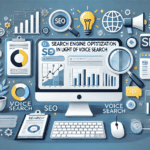If you have started a business, you must know how to find your target audience for a business. Welcome to the exciting world of business audience discovery! Whether you’re launching a startup, unveiling a new product, or revamping your marketing strategy, understanding your target audience is the compass guiding you towards success. Imagine presenting a mouthwatering steak to a group of dedicated vegetarians – it’s clear that knowing your audience matters.
In this guide, we’re diving into the art of identifying your ideal customers with precision and finesse. Forget the jargon and complex theories; we’re all about straightforward steps and actionable insights. By the end of this journey, you’ll be equipped with the skills to unravel the mysteries of your audience’s desires, pain points, and online habits.
Let’s go in and uncover your business’s target audience. It’s time to visualize your customers and develop effective methods.
What is a target audience?
A target audience refers to the specific group of individuals or customers that a business aims to reach, engage, and cater to with its products, services, or messages. This group is defined by certain demographic, psychographic, behavioral, and geographic characteristics that make them most likely to be interested in and benefit from what the business offers. Identifying a target audience helps businesses tailor their marketing strategies, content, and offerings to resonate effectively with these individuals, increasing the likelihood of connecting, engaging, and ultimately converting them into loyal customers.

Why is it Important to Know Who Your Audience is?
Focused Marketing: Defining a target audience allows you to tailor your marketing efforts, messages, and content specifically to the preferences, needs, and interests of that group. This increases the likelihood of your marketing resonating with them.
Efficient Resource Allocation: Targeting a specific audience helps you allocate your resources more efficiently. You can concentrate your budget, time, and efforts on the people who are most likely to convert, avoiding waste on irrelevant audiences.
Better Engagement: By understanding your target audience’s characteristics, you can create content that speaks directly to them. This enhances engagement and builds a deeper connection with your audience.
Higher Conversion Rates: When your marketing efforts are directed towards a group that is genuinely interested in what you offer, you’re more likely to see higher conversion rates – turning potential customers into paying ones.
Competitive Advantage: Knowing your audience better than your competitors allows you to differentiate yourself by offering solutions that are tailored to their specific needs and challenges.
Brand Loyalty: When you meet the specific needs of your target audience, you’re more likely to earn their trust and loyalty. Satisfied customers are more likely to stick around and recommend your products or services to others.
Data-Driven Insights: Understanding your target audience enables you to gather valuable data on their behaviors, preferences, and buying patterns. This data can guide future decisions and strategies.
Adaptation and Innovation: As you track your target audience’s responses and preferences, you can adapt and innovate your offerings to match their evolving needs.
Efficient Product Development: Designing products or services with a clear understanding of your target audience’s desires and pain points leads to offerings that are more likely to succeed in the market.
Types of Target Audiences
There are several types of target audiences that businesses can focus on, depending on their products, services, and marketing goals. Here are some common types:
- Demographic Target Audience: This type is based on specific demographic characteristics such as age, gender, income, education, marital status, and occupation. For example, a skincare brand might target women aged 25-40 with middle to high incomes.
- Psychographic Target Audience: This type considers the psychological and lifestyle traits of individuals. It includes factors like values, interests, hobbies, beliefs, attitudes, and behaviors. An outdoor adventure company might target individuals who value sustainability and have a passion for nature.
- Behavioral Target Audience: This type focuses on how customers behave towards a product or service. It takes into account purchase history, brand loyalty, usage frequency, and buying patterns. An e-commerce site might target frequent online shoppers who have a history of making fashion-related purchases.
- Geographic Target Audience: This type narrows down the audience based on geographical location. It could be as broad as targeting a specific country or as specific as targeting people within a certain radius of a physical store.
- B2B (Business-to-Business) Target Audience: In this case, businesses target other businesses as their audience. Factors might include the industry, company size, job roles, and specific business needs.
- B2C (Business-to-Consumer) Target Audience: Here, businesses focus on individual consumers. The targeting parameters depend on the product/service and its relevance to a consumer’s life.
- Local Target Audience: This is about reaching people in a specific local area, often useful for brick-and-mortar businesses. It could involve targeting a town, city, or neighborhood.
- Global Target Audience: On the other end of the spectrum, businesses with products or services that can transcend borders might target a worldwide audience.
- Niche Target Audience: This involves targeting a very specific and often small subset of the population with unique interests or needs. For example, a vegan bakery might target individuals who are not only vegan but also gluten-intolerant.
7 Crucial Steps to find your target audience
# Understand Your Target Audience
Define Your Business Niche
Picture your business as a star in a constellation – it has a unique place in the vast universe. To attract the right audience, you must define your niche. Are you a tech wizard specializing in innovative gadgets, or a bakery artist crafting delectable vegan treats? By carving out your niche, you draw a clear path to your ideal customers. So, ask yourself: What sets your business apart? What problems do you solve? Your niche is the compass that guides your audience focus.
Research Market Trends
In the ever-evolving marketplace, trends are the North Star of success. Stay attuned to what’s hot and what’s not. Is virtual reality taking the world by storm, or are eco-friendly products on the rise? By aligning your approach with current trends, you’re speaking your audience’s language. Dive into research, follow industry leaders, and monitor social chatter. Your business becomes a trend-savvy navigator, steering through the vast sea of possibilities towards your target audience.
# Analyze Competitors
In the dynamic landscape of business, comprehending your competitors is akin to possessing a treasure map to triumph. By dissecting your rivals, you unearth invaluable insights that illuminate strategic pathways. Start by identifying your key competitors, examining their offerings and audience engagement methods.
Perform a SWOT analysis to discern their strengths, weaknesses, opportunities, and threats. Probe into their target audience, messaging tactics, and channels. Monitor their innovative endeavors, tracking technological adoption, creative campaigns, and emerging trends. In the process, spotlight what sets your business apart by recognizing gaps and opportunities. Remember, competitive analysis isn’t about imitation, but learning, adapting, and ultimately, carving your own distinctive route to success.
# Analyze Audience Demographics
Age and Gender
Imagine tailoring a suit – it’s all about measurements. Similarly, understanding the age and gender of your potential customers is like tailoring your business to fit them perfectly. Does your product resonate more with tech-savvy millennials or wise and experienced baby boomers? Are you addressing the needs of both genders or focusing on a specific one? By pinpointing the age range and gender that align with your offering, you’re one step closer to creating a customer-centric experience that resonates deeply.
Location and Language: Map Your Audience Landscape
Just as explorers chart their course using maps, you’re mapping the landscape of your audience by identifying their locations and preferred languages. Is your audience clustered in urban centers, or do they span across rural communities? Are they more comfortable with English, Spanish, or another language? These insights are the compass guiding your communication strategies. Speaking your audience’s language – both literally and figuratively – fosters a stronger connection and better engagement.
# Identify Pain Points
Welcome to the realm of understanding your audience’s challenges – a crucial step in building a meaningful connection with your potential customers.
Customer Survey
Think of customer surveys as X-ray glasses that reveal what lies beneath the surface. Engaging with your audience through surveys is like having a direct conversation with them about their needs and pain points. What obstacles do they face in their daily lives that your product or service can overcome? Craft questions that invite them to open up about their challenges, desires, and unmet needs. These responses are precious gems that guide you towards creating solutions that truly resonate.
Sample questions related to pain points::
- What frustrates you the most about managing your business’s finances on a daily basis?
- What challenges do you encounter when attempting to find reliable childcare services for your family?
- Have you ever wished there was a simpler way to track your fitness progress?
- What obstacles have you faced when trying to plan a budget-friendly vacation?
- What aspects of the tech industry do you find confusing or unclear?
- What do you find the most time-consuming or labor-intensive about meal prepping?
- Are there any roadblocks that consistently hinder you from achieving a healthy work-life balance?
Social Media Listening
Imagine attending a party and eavesdropping on conversations that offer valuable insights. Social media is your digital party, and listening to its conversations can provide a goldmine of audience concerns. Pay attention to what people are saying about your industry, competitors, and related topics. Are they discussing recurring issues or sharing experiences? These online dialogues give you an unfiltered view into their pain points, helping you fine-tune your offerings to be the solution they seek.
# Evaluate Consumer Behavior
In this section, we’re diving into the realm of consumer behavior – an essential compass for crafting a tailored marketing strategy.
Online Habits
Understanding where your audience hangs out online is like finding their favorite café – a place to connect and engage. Delve into their online habits with these points:
- Social Media Platforms: Identify which platforms they frequent – Facebook, Instagram, Twitter, or TikTok.
- Content Consumption: Discover the types of content they engage with – videos, articles, infographics, or memes.
- Peak Times: Determine when they’re most active online – mornings, lunch breaks, or evenings.
- Online Communities: Find out if they participate in forums, groups, or online communities related to your industry.
By mapping their digital footprints, you can deliver targeted content at the right time and in the right place, amplifying your engagement.
Purchase Patterns
Knowing the secret behind how your audience makes purchasing decisions is like holding a treasure map. Analyze their purchase patterns to align your offerings effectively:
- Research Phase: Identify if they extensively research products before making a decision.
- Reviews and Recommendations: Explore whether they rely on reviews, testimonials, or recommendations from others.
- Discount Sensitivity: Determine if they are motivated by discounts, deals, or exclusive offers.
- Brand Loyalty: Find out if they stick with familiar brands or are open to trying new ones.

# Craft Targeted Messaging
Imagine sitting down with a close friend, sharing stories and laughs – that’s the kind of connection we aim for in our messaging. To achieve this, it’s crucial to adopt a communication style that feels like a natural conversation:
When choosing your words, opt for a vocabulary that your audience is familiar with, avoiding technical jargon that might alienate them. Let your tone harmonize with their preferences – whether it’s a friendly chat, a professional discussion, or a more casual exchange. Keep cultural sensitivity in mind, ensuring your message is relatable across diverse backgrounds. And finally, infuse your words with emotions that resonate – when your audience feels understood, the bond deepens.
Start by pinpointing the pain points you’ve previously uncovered. Show empathy – let them know you understand the difficulties they’re facing. Highlight how your offering directly addresses their specific challenges – demonstrate the solution you’re presenting. Paint a vibrant picture of the benefits they’ll reap from using your product or service, illustrating the positive transformation that awaits.
# Testing and Refining
A/B Testing: The Science of Experimentation
A/B testing is your secret weapon in the quest for optimal messaging and offers. Here’s how to wield it effectively:
- Identify Variables: Choose the elements you want to test – it could be headlines, images, call-to-action buttons, or even pricing.
- Create Variations: Craft different versions of your content, each featuring a single variable change.
- Set Metrics: Define clear metrics for success – click-through rates, conversions, or engagement levels.
- Randomized Testing: Present these variations randomly to your audience, ensuring unbiased results.
- Analyze Results: Monitor performance and compare how each version performs against the set metrics.
- Implement Changes: Based on the results, implement the winning variation that resonates the most with your audience.
Remember, A/B testing isn’t a one-time affair – it’s an ongoing process that hones your strategy over time.
Feedback Loop
Imagine your audience as a treasure chest of insights, waiting to be unlocked. Here’s how to open that chest and learn from their feedback:
- Create channels for feedback – surveys, social media polls, customer reviews, and direct interactions.
- Encourage honesty by assuring your audience that their feedback is valued and acted upon.
- Regularly review and analyze the feedback received, looking for patterns, concerns, and suggestions.
- Adjust your strategies based on this feedback – whether it’s refining messaging, improving products, or enhancing customer experiences.
What are the Differences Between Target Audience and Target Market
| Aspect | Target Audience | Target Market |
| Definition | Specific group interested in products, services, or messages. | Group of potential customers for a business’s offerings. |
| Focus | Individuals or consumers as recipients. | Consumers or businesses as recipients. |
| Characteristics | Based on demographics, psychographics, behaviors, and geography. | Based on similar needs, preferences, and characteristics. |
| Scope | Can be narrower and more specific. | Generally broader and inclusive. |
| Marketing Strategy | Tailors messaging and content for effective engagement. | Shapes overall marketing and sales strategies. |
| Example | Young adults who love outdoor activities. | Parents looking for eco-friendly baby products. |
| Usage | Used in content creation and messaging. | Used in business planning and strategy. |
| Personalization | More individualized and specific. | May involve broader strategies. |
| Customization | Requires creating content for different audience segments. | Involves segmenting for tailored offerings. |
What are the Disadvantages of Target Audiences
While targeting specific audiences offers numerous benefits, there are also some potential disadvantages to consider:
Narrow Focus: Overly narrowing your focus on a specific target audience might exclude potential customers who could benefit from your products or services but don’t fit within the defined parameters.
Missed Opportunities: By concentrating solely on one target audience, you might overlook other segments with untapped potential, preventing your business from diversifying and expanding.
Limited Growth: Relying too heavily on a single target audience could hinder your business’s growth potential, as your offerings might not resonate with new or emerging markets.
Market Changes: If your target audience’s preferences or needs change, you could find your business struggling to adapt and losing its competitive edge.
Missed Personalization: Overreliance on segmentation might lead to generic messaging that fails to resonate with individual customers within the target audience.
Complexity: Managing multiple target audiences can be challenging, as each might require unique strategies, content, and approaches, increasing complexity in your marketing efforts.
Misinterpretation: Overemphasis on demographics might overlook deeper psychographic or behavioral insights, resulting in less effective marketing.
Resource Allocation: Allocating resources to cater to multiple target audiences can be resource-intensive, requiring diverse marketing campaigns and strategies.
Alienation: Poorly executed targeting strategies could alienate certain audiences, leading to negative perceptions and potential backlash.
Market Saturation: If multiple competitors target the same audience, it can lead to oversaturation and increased competition, making it harder to stand out.
Conclusion
Now you can do it yourself as you know how to find your target audience for a business. In the grand tapestry of business, a well-defined target audience stands as the linchpin of success. As we bid farewell to this journey, remember that understanding and connecting with your audience isn’t just a strategy – it’s a lifeline. By tailoring your efforts to their preferences, needs, and aspirations, you forge a powerful bond that propels your business forward. With a keen eye on your audience’s pulse, you’re not just reaching customers – you’re building a loyal community that will champion your brand.
Learn how to build a strong network as an entrepreneur for more advancement in your business.








